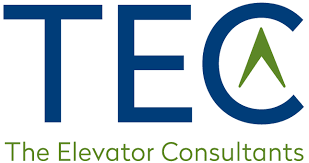In an ever-evolving industry like elevators, staying informed about the latest trends is critical for building owners and property managers. One emerging trend that is reshaping the industry is Alternative Equipment Maintenance (AEM). AEM offers a new approach to maintaining elevator and escalators, deviating from the traditional, preventative service models that have long dominated the industry. The question is what does AEM entails, how does affect building owners and property managers, and why this shift is becoming increasingly significant.
What is Alternative Equipment Maintenance (AEM)?
AEM is a more flexible approach to maintaining building systems like elevators. Traditionally, elevator maintenance has been conducted under fixed contracts with terms and conditions dictated by the elevator service companies. These contracts, often long-term, lock building owners into preventive maintenance services that usually do not receive, resulting in break fix or callback maintenance. While this can provide peace of mind, there are growing concerns that these contracts aren’t delivering the service promised, often leaving building owners frustrated by rising costs and under-delivered services and extra charges.
AEM, on the other hand, allows building owners and property managers to take control of their maintenance strategies. This approach enables a building with elevators to customize their service contracts, selecting vendors’ services that fit the specific needs of its building rather than adhering to the current one-size-fits-all model. With AEM, maintenance services can be outsourced to various vendors, allowing for competition, better pricing, and improved service quality as long as the right strategy is implemented.
AEM Across Different Industries
The concept of AEM isn’t unique to the elevator industry. In fact, AEM was started and is now being embraced across several other industries, including the medical and heavy equipment sectors. Understanding how these industries utilize AEM can offer valuable insights for building owners, property managers, and anyone who has an elevator or escalator who is considering a shift in their elevator maintenance strategies.
Medical Industry
The medical field, particularly in hospitals and healthcare facilities, has increasingly adopted AEM for managing complex medical devices and equipment. These facilities rely heavily on high-functioning, sophisticated machines like MRI scanners, X-ray machines, and ventilators, where downtime can lead to severe patient care consequences. Traditionally, these machines were maintained through service agreements with the manufacturers, much like elevators.
However, with the rise of AEM, healthcare facilities are opting for more flexible maintenance strategies. By using the right team, hospitals can avoid being locked into costly, inflexible contracts. Additionally, healthcare facilities are leveraging real-time monitoring and predictive maintenance technologies, similar to what is happening in the elevator industry, to understand equipment failures and extend the lifespan. This results in more cost-effective management of their medical devices without sacrificing safety and compliance.
The connections to the elevator industry are similar; just as a hospital’s machinery is vital to its operation, elevators and escalators are a critical part of a building’s operations. A breakdown in either system can lead to significant operational issues. In both cases, AEM allows for proactive, customized maintenance plans that ensure the system is working optimally while avoiding unnecessary costs.
Heavy Equipment and Manufacturing
Another industry that has seen a shift toward AEM is heavy equipment and manufacturing. Industries that rely on large machinery, such as construction, mining, and manufacturing plants, are heavily dependent on their equipment always working. The failure of critical machines—whether a crane, bulldozer, or industrial robot—can bring entire operations to a halt, leading to costly delays and lost revenue.
For years, these industries were tied to OEM service contracts, similar to those in the elevator sector. However, as the demand for greater flexibility and cost control grew, companies began adopting AEM models. Now, many large equipment users are turning to independent service providers or even in-house teams for maintenance, allowing them to better manage costs, increase competition among service providers, and ensure that maintenance schedules align with their operational needs.
Like in the medical field, data-driven maintenance is becoming a key element of AEM in these industries. A variety of technologies now monitor equipment performance in real time, detecting issues before they escalate into critical failures. This predictive maintenance approach reduces downtime and extends machinery lifespan. Building owners in the elevator industry are increasingly adopting AEM to achieve the same benefits, optimizing performance and minimizing unexpected failures.
Why Is AEM Becoming More Popular in the Elevator Industry?
There are several driving forces behind the rise of AEM in the elevator industry, mirroring trends seen in the medical and heavy equipment sectors:
- Cost Transparency and Control: Traditional elevator maintenance contracts are notorious for their lack of transparency. Building owners often find themselves paying for services they don’t receive or, even worse, services they don’t need. AEM provides owners with a clearer understanding of what they are paying for and gives them the freedom to adjust services according to their building’s actual requirements. This ability to tailor contracts directly impacts cost control, making it more budget-friendly.
- Customizable Service Options: Every building is different, and a standard maintenance package often doesn’t cater to unique operational demands. AEM allows property managers to prioritize certain services over others, optimizing the elevator’s functionality without overextending on unnecessary expenditures.
- Freedom from Proprietary Lock-ins: Many OEMs design elevators with proprietary software and parts, making it difficult for building owners to switch service providers. AEM introduces the possibility of using third-party vendors who can service these systems without the constraints of proprietary lock-ins, leading to competitive pricing and potentially faster response times for repairs and maintenance.
- Leveraging Technology: With the rise of advanced elevator monitoring systems and smart building technologies, owners and managers can collect real-time data on their elevators. This data-driven approach transforms traditional preventative maintenance by identifying and addressing issues before they escalate into costly repairs or shutdowns—provided the right processes and procedures are in place. AEM simplifies the adoption of modern technologies without locking organizations into an OEM’s specific tools or platforms.
The Impact of AEM on Building Owners and Property Managers
The adoption of AEM in buildings with elevators presents both opportunities and considerations for building owners and property managers. Below are some key points to keep in mind:
Increased Responsibility
While AEM offers freedom and flexibility, it also places more responsibility on building owners and property managers. Without the safety net of an OEM contract, managers must be more proactive in ensuring that maintenance is being performed on schedule. This can be easily managed with the ElevatorApp software or buildings recordkeeping. This requires oversight and possibly working with an elevator consultant who specialize in elevator and escalators to help manage vendors and service plans.
Long-Term Cost Savings
A significant benefit of AEM is its potential to reduce long-term maintenance costs. By choosing only the necessary services and avoiding unnecessary repairs or system overhauls, owners can keep their budgets in check. Additionally, with more competition in the market, AEM enables better pricing negotiations.
Enhanced Vendor Accountability
One major frustration with traditional maintenance agreements is the lack of accountability from service providers. Under AEM, building owners have more control over their vendors. Regular performance reviews and the ability to switch providers foster a greater sense of accountability among service providers.
Safety and Compliance Considerations
Safety and compliance remain key factors in any maintenance strategy, though AEM does not inherently compromise these elements. Property managers need to ensure that their chosen AEM strategy meets all local and national safety standards, including compliance with the latest elevator codes and regulations, such as door lock monitoring (DLM) requirements.
Proper vendor management can help ensure that elevators remain in good working order and compliant with regulations. By working with knowledgeable elevator consultants, building owners can ensure that safety remains a priority under AEM.
As seen in the medical and heavy equipment industries, AEM offers a flexible, cost-effective solution that empowers building owners and property managers. The elevator industry is following suit, with AEM providing building owners more control over their maintenance strategies, enhancing service quality, and reducing costs. By partnering with a knowledgeable team and leveraging the latest technology, AEM offers a modern solution to elevator maintenance without sacrificing reliability or compliance.
For building owners looking to optimize their elevator systems and explore AEM, working with an expert elevator consultant will be key to unlocking its full potential.
FAQ’s
What is Alternative Equipment Maintenance (AEM), and how is it different from traditional elevator maintenance?
AEM is a flexible maintenance strategy that allows building owners and property managers to customize their elevator service. Unlike traditional elevator service contracts, which are rigid and often tied to long-term agreements, AEM enables you to choose vendors and services based on your building’s specific needs. This approach encourages competition, reduces costs, and enhances transparency, providing you with more control over the maintenance of your elevator systems.
Is AEM more cost-effective than traditional elevator maintenance contracts?
Yes, AEM can be more cost-effective. Traditional OEM contracts often include bundled services, terms and conditions that you may not need, leading to unnecessary expenses. AEM allows you to select only the services you require, negotiate better pricing with vendors, and avoid paying for repairs or inspections that aren’t necessary. By having more control over the maintenance process, building owners can significantly reduce costs while maintaining high service standards.
Will AEM compromise the safety or compliance of my building’s elevators?
No, AEM does not compromise safety or compliance. You can still ensure that all services meet local and national elevator codes. With proper vendor management, AEM can maintain the same level of safety as traditional maintenance contracts. The building may need to implement new processes and procedures, which can result in significant savings.
How do I start implementing AEM for my building’s elevator systems?
To get started with AEM, begin by conducting an assessment of your building’s elevator needs, gathering industry data, and understanding the reliability, usage, and safety of your elevator and escalators. Identify areas where you can optimize services, and consult with an experienced elevator consultant to help design a customized maintenance strategy. They can assist in selecting the right vendors, negotiating contracts, and ensuring that you’re leveraging the latest technology for monitoring elevator performance.
How do I know if AEM is right for my building?
AEM might be right for your building if you’re looking for more control over maintenance services, reduced costs, and flexibility in choosing vendors. If you feel dissatisfied with your current maintenance contract, want to avoid lock-ins, or need services tailored to elevator usage, AEM delivers better customization and transparency. Consulting an elevator consultant who can help you determine if AEM fits your building’s needs.

